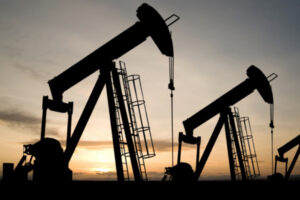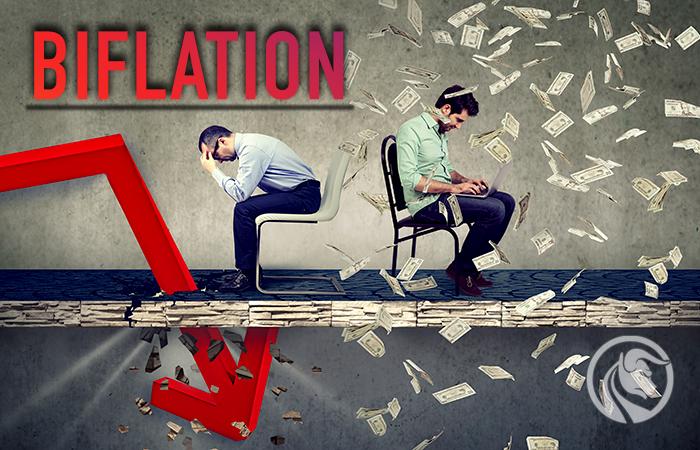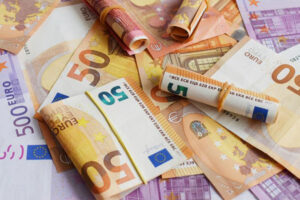Biflation – i.e. inflation and deflation at the same time. Who loses from this?
Inflation often arouses emotions among both experts and ordinary citizens. Especially the latter part of society often raises the argument that “my inflation is higher than the official one”. Contrary to appearances, this formulation is not incorrect. The CPI inflation rate informs about changes in the average price level in the economy. In turn, each of us has our own “inflation basket”. Why do inflation reported by individual households differ from the CPI? This is because prices of individual products may move in completely different directions. For example, bread prices may rise, while electronics prices may fall. So the reported change in purchasing power may be different even among neighbors. One of the reasons for this situation may be Cantillon effect, which we wrote about in one of our recent articles. A special case is the so-called biflation (biflation), which is what this text is about.
Biflation, inflation, deflation – what are the differences?
Biflation is a situation in which there is a simultaneous increase and decrease in the prices of specific goods in the economy. This phenomenon occurs regardless of whether there is deflation or inflation in the entire economy.
Let us briefly recall the difference between inflation and deflation.
Inflation we call it a situation when the general level of prices of goods and services in a given area (country, common monetary area, etc.) increases. Therefore, it is a phenomenon of loss of purchasing power of money. In the case of fiat money, inflation is a very common phenomenon.
In turn, deflation this is a situation when there is a general decline in prices in the economy. This may result, for example, from a decline in the economic situation. Uncommonly, a so-called deflationary spiral may occur, in which consumers and companies will postpone purchases because they are waiting for further price declines. This situation is dangerous because lower demand translates into reduced production, which causes increased unemployment. Moreover, during deflation, the value of money increases over time, which means it is more difficult to pay off debts.
One type of biflation is skewflation, which is that the cost of living increases while the price of financial assets and real estate falls. Most often this happens during stagflation.
Biflation – who created this concept?
He created the term biflation Dr. F. O. Brown, who was a senior analyst at Phoenix Investment Group. While analyzing price change data, he noticed that the prices of individual products may move in the opposite direction. Therefore, prices may be falling in one market while prices are rising in another. In his opinion, such a situation occurs when central banks increase the money supply in order to stimulate a stagnant or stagnant economy. recession. When the economy contracts, deflation often occurs. Seeing this problem, the central bank may decide to implement QE (quantitative easing). Due to the fact that money does not reach the market at the same time (Cantillon effect).
During an economic recession, the relative price of electricity or food remains less volatile compared to, for example, discretionary goods. This is because when real incomes decline, spending is focused on purchasing the most needed products. In turn, discretionary goods are under pressure from falling demand. This means that the prices of some products may fall year-on-year. In such a situation, biflation may occur. Some goods will become more expensive due to the Cantillon effect or due to the increase in market demand for cheaper substitutes.
Similarly, during a credit squeeze, assets purchased with leverage (e.g. real estate) may decline sharply in value. This was the case, for example, during the crisis in Greece, when this type of assets suffered many years of deflation. In the case of the USA, the decline in prices on the real estate market after 2008 was much less painful, but this was due to the crisis being "printed" by the use of ultra-loose monetary policy. The rate cut and large supply of credit lowered mortgage rates and set the stage for another real estate bubble.
Another reason for the uprising biflation jest globalization and financialization of the economy. For example, the dynamic development of China and India resulted in high demand for fuels and metals even during the crisis in the USA. As a result, this supported the prices of this type of raw materials. Moreover, globalization lowered production costs as clothes, shoes, electronics, and other goods were produced in China. Therefore, some products experienced a decline in prices during the first decade of the 21st century.
For example, the 2007-2008 crisis caused stock and real estate prices to experience a sharp decline. At the same time, there was an increase in market liquidity due to increased liquidity gold prices. Monetary policy was also echoed by the subsequent large boom in the food and raw materials markets in 2010-2011. The QE period also saw a huge increase in asset prices, which was much faster than the increase in nominal earnings. In addition, the prices of electronics and chips were falling, which resulted from technological progress. Additionally, the revolution on the IT market and in access to data resulted in a drastic drop in software costs, which gave room for the development of companies offering software in the form of SaaS. The marginal cost of acquiring an additional bit of data also dropped, significantly reducing development costs artificial intelligence.
Biflation – why is it worth looking at?
Biflation poses significant challenges for the conduct of policy by the central bank and the government. The most important of them include:
- Problem in creating appropriate monetary policy – biflation makes it difficult for central banks to use simple monetary policy tools, such as changes in interest rates. Lowering interest rates helps fight deflation, but at the same time increases the risk of inflation. Therefore, if biflation is large, the central bank may not change rates dramatically so as not to lead to greater price imbalance between individual assets.
- Uncertainty in the markets – different price dynamics mean that investments may be reduced because it will be more difficult for entrepreneurs to make decisions about incurring CAPEX (e.g. building a new factory).
- Unequal impact on different social groups – biflation causes different social groups to be beneficiaries or harmed by changes in the prices of goods and services. For example, rising food prices hit the poorest social group the hardest. In turn, the increase in share prices benefits the richest part of society.
- Imbalance in the economy – the higher the biflation, the greater the imbalance within the economy. This situation makes it difficult to conduct effective monetary and fiscal policy.
- Difficulties in economic analysis – strong biflation may mean that traditional analytical models and economic indicators may not reflect the actual state of the economy. This makes it more difficult for economists and politicians to make decisions.
Summation
Biflation is a situation when the prices of some products or services increase and others decrease. Knowing the existence of biflation allows us to better understand complex economic phenomena. This applies especially to periods with a not very stable economic environment, when, for example, unorthodox monetary policy becomes more popular.
One classic example is the increase in prices of raw materials and the decline in finished products. Raw materials may grow due to increased demand from developing countries. The need for new infrastructure causes an increase in demand for steel, copper or cement. Also, the increase in energy consumption causes an increase in demand for energy raw materials. At the same time, due to technological progress and improved operational efficiency, production is becoming cheaper. Globalization also encourages companies to locate production in cheaper countries. These factors result in a permanent decline in prices in some sectors of the economy. The impact of the price drop is particularly strong in the technology and electronics industries. This is due to rapidly changing technology, which makes older solutions worth less than half a year or a year ago.
Phenomenon biflation causes a diversified impact of this phenomenon on the economy. The drop in prices is beneficial for consumers, while it forces companies to save more and allocate capital more efficiently. In turn, if a certain sector experiences price increases, there may be an influx of competitors who see their opportunity. Of course, the price increase itself may be "pushed" by costs. Then there will be no significant increase in profitability, which will not encourage greater competition.
Biflation is visible during detailed monitoring and analysis of economic data. It is therefore worth looking at the statistical data of relevant institutions and looking for information about individual sectors. Information about the general price level itself may not translate into price dynamics in a specific industry. The greater the biflation, the more cautious monetary and economic policy should be. This is because, for example, excessive monetary loosening due to the Cantillon effect may lead to even greater inequality in the economy. Of course, it should be remembered that prices are also influenced by the situation on the international goods market. Biflation is a complex economic phenomenon that requires a non-standard approach to monetary and fiscal policy.






















![Forex Club – Tax 9 – Settle tax on a foreign broker [Download the Application] Forex Club - Tax 9](https://forexclub.pl/wp-content/uploads/2024/02/Forex-Club-Podatek-9-184x120.jpg?v=1709046278)
![Trading View platform – solutions tailored to the needs of traders [Review] trading view review](https://forexclub.pl/wp-content/uploads/2024/03/trading-view-recenzja-184x120.jpg?v=1709558918)
![How to connect your FP Markets account to the Trading View platform [Guide] fp markets trading view](https://forexclub.pl/wp-content/uploads/2024/02/fp-markets-trading-view-184x120.jpg?v=1708677291)
![CRB index – one of the popular commodity market benchmarks [Guide] crb index](https://forexclub.pl/wp-content/uploads/2024/05/indeks-crb-184x120.jpg?v=1715055656)
![How to invest in ChatGPT and AI? Stocks and ETFs [Guide] how to invest in chatgpt and artificial intelligence](https://forexclub.pl/wp-content/uploads/2023/02/jak-inwestowac-w-chatgpt-i-sztuczna-inteligencje-184x120.jpg?v=1676364263)







![Izabela Górecka – “Success on the market depends not only on knowledge, but also on emotional stability” [Interview] Izabela Górecka - interview](https://forexclub.pl/wp-content/uploads/2024/04/Izabela-Gorecka-wywiad-184x120.jpg?v=1713870578)
![WeWork – the anatomy of the collapse of a company valued at $47 billion [WeWork, part II] wework bankruptcy story](https://forexclub.pl/wp-content/uploads/2024/04/wework-bankructwo-historia-184x120.jpg?v=1711729561)
![Adam Neumann – the man who screwed up Softbank [WeWork, part AND] adam neumann wework](https://forexclub.pl/wp-content/uploads/2024/04/adam-neumann-wework-184x120.jpg?v=1711728724)
![The most common mistakes of a beginner trader - Mr Yogi [VIDEO] Scalping - The most common mistakes of a beginner trader - VIDEO](https://forexclub.pl/wp-content/uploads/2024/03/Scalping-Najczestsze-bledy-poczatkujacego-tradera-VIDEO-184x120.jpg?v=1711601376)
![Learning patience: No position is also a position - Mr Yogi [VIDEO] Scalping - Learning patience - No position is also a position - VIDEO](https://forexclub.pl/wp-content/uploads/2024/03/Scalping-Nauka-cierpliwosci-Brak-pozycji-to-tez-pozycja-VIDEO-184x120.jpg?v=1710999249)
![When to exit a position and how to minimize losses - Mr Yogi [VIDEO] Scalping - When to exit a position and how to minimize losses - VIDEO](https://forexclub.pl/wp-content/uploads/2024/03/Scalping-Kiedy-wyjsc-z-pozycji-i-jak-minimalizowac-straty-VIDEO-184x120.jpg?v=1710336731)



















Leave a Response